PHYSIOLOGICAL BEHAVIOR OF RADISH PLANTS (Raphanus sativus L.) SUBJECTED TO SALINITY STRESS
Keywords:
physiology, salinity, soil, stress, vegetableAbstract
Among root vegetables, radish (Raphanus sativus L.) is of great importance for their nutraceutical properties due to the high content of vitamins and minerals, in addition to be a productive option for the country’s farmers. A condition that limits the production of most vegetal species is soil salinization whether caused naturally due to its evolution or misuse of fertilizers causing saturation of salts in the soil this condition significantly affects the physiology of the plant, leading to the restriction of growth and development of the same, reflected in the final crop performance. Therefore the evaluation of some physiological parameters as stomatal conductance, chlorophyll content, respiration rate, chlorophyll fluorescence and growth parameters of radish plants growth stage V18, under salt stress was generated. Statistical differences (p≤ 0,05) on parameters such as stomatal conductance, leaf thickness and weight of tuberous root was found, indicating that plants generate mechanisms of morphological type to withstand the stress condition for the other outcome measures there was no difference, this may be due to the phenological stage of the plants as this specie is tolerant provided that no condition is permanent.
Author Biographies
Karen Lisseth AFRICANO PERÉZ
Ingeniera Agrónoma
Estudiante de Maestría en Fisiología Vegetal.
Universidad Pedagógica y Tecnológica de Colombia
Elberth Hernando PINZÓN SANDOVAL
Ingeniero Agrónomo
Grupo de Investigaciones Agrícolas
Universidad Pedagógica y Tecnológica de Colombia
References
APPELS, A. & LAGUDAH, H. E. 1990. Manipulation of chromosomal segments from wild wheat for the improvement of bread wheat. Aust. J. Plant Physiol. 17: 253-266.
ARGENTEL, L., LÓPEZ, D. R., GONZÁLEZ, L. M., LÓPEZ, R., GÓMEZ, C. E., GIRÓN R. & FONSECA I. 2009. Contenido de clorofila e iones en la variedad de trigo harinero cuba-c-204 en condiciones
de estrés salino. Cultivos Tropicales 30(4): 32-37.
BBCH, 2001. Estadios de las plantas mono-y dicotiledóneas. Meier U. ed. 2 Edition, Centro Federal de Investigaciones Biológicas para Agricultura y Silvicultura. Alemania. 149pp.
BRAY, S. & REID, D.M. 2002. The effect of salinity and CO2 enrichment on the growth and anatomy of the second trifoliate leaf of Phaseolus vulgaris. Can. J. Bot. 80, 349-359.
CAMPOS, G., GARCÍA, M. PÉREZ, D. & RAMIS, C. 2011. Respuesta de 20 variedades de Caraota (Phaseolus vulgaris L.) ante el estrés por NaCl durante la germinación y en fase plantular. Bioagro 23 (3): 215-224.
CADENA HORTOFRUTÍCOLA, 2014. Ficha técnica sobre el cultivo de rábano (Raphanus sativum L.). Disponible en http://cadenahortofruticola.org/admin/bibli/417rabano.pdf. Accesado en 05/07/
2014.
CASIERRA, F., PÉREZ, W. & PORTILLA, F. 2006. Relaciones hídricas y distribución de materia seca en especies de fique (Furcraea sp. Vent.) cultivadas bajo estrés por NaCl. Agron. Colom. 24(2): 280-289.
CASIMIR, A. 2001. Respuesta del crecimiento y productividad de rábano (Raphanus sativus, L.), cilantro (Coriandrum sativum L.) y habichuela (Phaseolus vulgaris L.) a fertilizante mineral y estiércoles de vaca y oveja en Nigua, República Dominicana. Universidad Pedro Henríquez Ureña, Santo Domingo, Tesis de maestría. República Dominicana.
CORREIRA, C., MOUTHINO-PEREIRA, J., COUTINHO, F., BJÖRN, L. & TORRESPEREIRA, J. 2005. Ultraviolet-B radiation and nitrogen affect the photosynthesis of maize: a Mediterranean field study. Eur J
Agronomy 22: 337-347.
CRIOLLO, H. & GARCÍA, J. 2009. Efecto de la densidad de siembra sobre el crecimiento de plantas de rábano (Raphanus sativus L.) bajo invernadero. Rev. Colomb.
Cienc. Hortic. 3 (2). 210-222. DEPARTAMENTO NACIONAL DE ESTADÍSTICA (DANE), 2011. Encuesta Nacional Agropecuaria ENA-2011. Disponible en http://www.dane.gov.co/files/investigaciones/ena/boletin_2011.pdf. Accesado en 06/04/2014.
FLOWERS, T. J. & YEO, A. R. 1986. Ion relations of plants under drought and salinity. Australian Journal of Scientific Research 75: 91.
GARCÍA, M., E. MEDINA & VILLAFAÑE, R. 2009. Acumulación de iones y solutos orgánicos en hojas de plantas de caña de azúcar en dos tablones comerciales afectados por sales. Bioagro 21: 87-98.
GARCÍA, M. & JÁUREGUI, D. 2008. Efecto de la salinización con NaCl o Na2SO4 sobre la anatomía foliar en dos genotipos de caña de azúcar (Saccharum ssp.) con tolerancia salina diferencial. Ernstia 18(1): 89-105.
MINISTERIO DE AGRICULTURA Y DESARROLLO RURAL (MADR). 2012. Anuario estadístico de frutas y hortalizas 2007-2011 y sus calendarios de siembras y cosechas, Resultados Evaluaciones Agropecuarias Municipales 2011. Disponible en http://www.agronet.gov. co/www/htm3b/public/Anuario/anuario%20estadistico%20de%20frutas%20y%20hortalizas%202011.pdf. Accesado en
04/04/2014.
MONTERO, S.M., SINGH, B.K. & TAYLOR R. 2006. Evaluación de seis estructuras de producción hidropónica diversificada en el trópico húmedo de Costa Rica. Tierra Tropical 2(1): 27-37.
LEIDI, E. & PARDO, J. M. 2002. Tolerancia de los cultivos al estrés salino: qué hay de nuevo. Revista de Investigaciones de la Facultad de Ciencias Agrarias 2(2): 69-90.
MAXWELL, K. & JOHNSON, G. (2000) Chlorophyll fluorescence-a practical guide. J. Exp. Bot. 51(345): 659-668.
MAGNUSSON, G. 1997. Diurnal measurements of Fv/Fm used to improve productivity estimates in macroalgae. Marine Biology 130(2): 203-208.
MORALES, C. D., DELL’AMICOI C. J., RODRÍGUEZ, C. P., TORRECILLAS, A. & SÁNCHEZ-BLANCO M. DE J. 2010. Efecto del estrés por NaCl en el crecimiento y las relaciones hídricas en plantas de tomate (solanum lycopersicum L.) durante el período vegetativo. Cultrop 31(4): 10-23.
MUNNS, R., 2002. Comparative physiology of salt and wáter stress. Plant, Cell and Environ 25: 239-250.
PÁRES, J. & BASSO C. 2013. Efecto del cloruro de sodio sobre el crecimiento y estado nutricional de plantas de papaya. Bioagro 25: 109-116.
SANCLEMENTE, M. & PEÑA, E. 2008. Crecimiento y eficiencia fotosintética de ludwigia decurrens walter (onagraceae) bajo diferentes concentraciones de nitrógeno. Acta biol. Colomb. 13(1): 175-186.
TABATABAEI, S. J. 2006. Effects of salinity and N on the growth, photosynthesis and N status of olive (Olea europaea L.) trees. Scientia Horticulturae 108 (4): 432-438.
VELARDE, A. 2009. Modulación del transporte iónico por poliaminas y especies reactivas de oxígeno y su posible impacto en la respuesta de plantas al estrés salino. Universidad de Colima, Tesis de Maestría. México. 87pp.




